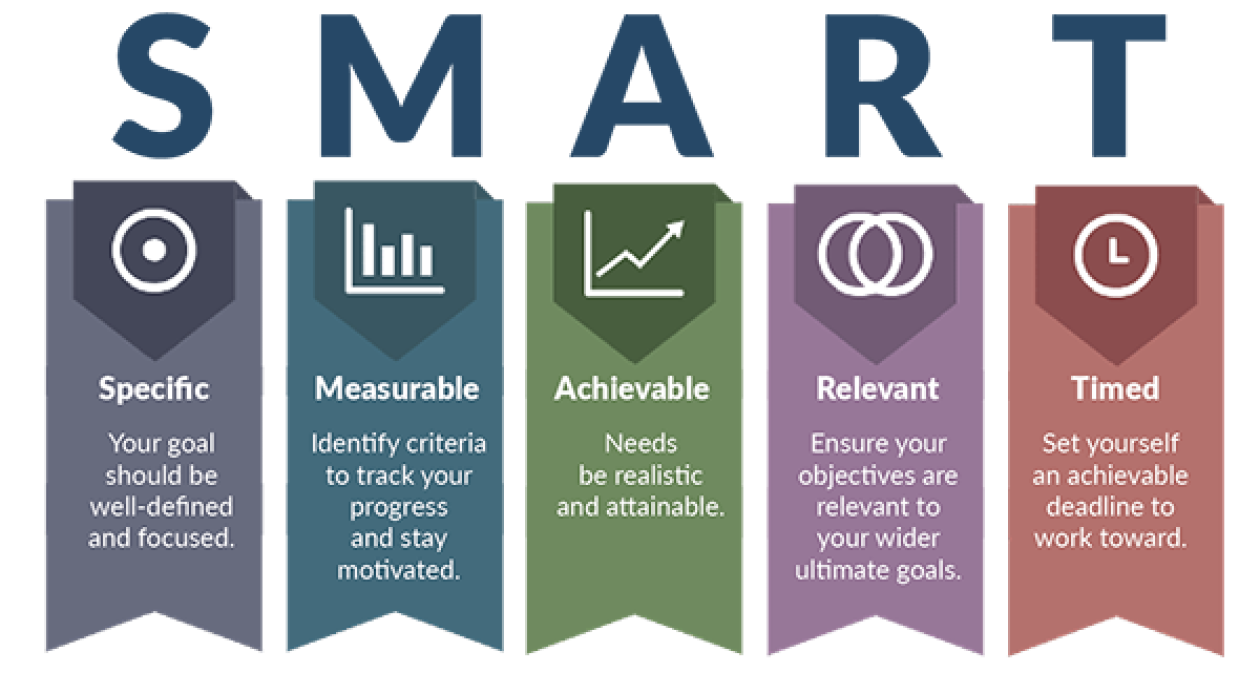Successful leaders know that there is always room for improvement and make time for their self-development and learning no matter how far along in their career they are. We've identified 4 key steps that support continuous growth for you to follow as part of your self-improvement process.
1. Where do I want to be?
Without understanding where and who you want to be, you will struggle to focus your development. Write down all your aspirations and goals, no matter how outlandish they may seem; it's useful to have a complete picture of your hopes and dreams even if they aren't achievable in the short term. Also think about who you want to be - are there certain behaviours you feel you need to work on to become a better leader? Do you want to develop elements of your emotional intelligence to become more optimistic for example, or to have increased impulse control? Visualise your ideal self.
2. Who am I now?
The next step is to create a clear picture of who and where you are now. What are your strengths and weaknesses? It's important to consider both your behaviours and personality traits as well as your hard skills.
Psychometric assessments can be useful in supporting you in creating a clear picture of yourself in terms of your personality, behaviour and emotional intelligence and help you to identify where your strengths lie and what you may need to develop.
360 feedback adds objectivity to your picture of your current self. Collect feedback from your colleagues, team, manager, customers and anyone else you want to work with, around where they feel you excel and what you could work on.
Once you've identified your strengths and weaknesses, it's important to bring it all together. A SWOT matrix, widely used in businesses, can be useful for your personal development. By displaying your strengths and weaknesses alongside any opportunities and threats in your current environment, you'll be able to better identify actions you can take as part of your self-development.
3. Bridging the gap
So you've identified where you are now and where you want to be - but how can you bridge the gap between these and make your leadership vision a reality? The first step is setting objectives for yourself. We recommend following the SMART framework:
Once you know exactly what you want to achieve, actions need to be taken to get there. Ask yourself what training you may require and what support you need - would you benefit from coaching, or from a mentor who has already walked the path you#re on? Take action early on and keep the momentum going long term. There may be some quick wins but developing yourself as a leader is a continuous process and you mustn't forget the long game.
4. Reflect and review
Setting your development plan and putting it into motion is only the beginning; your environment is constantly changing as are you, so continuous evaluation is key to ensure your plan doesn't drift. Review progress against your objectives monthly and tweak your goals and action plan appropriately. Collect feedback regularly. We recommend formally collecting 360 feedback once a year to objectively assess your strengths and weaknesses and how they are evolving.
Development is never complete! You've set yourself goals, but there is no one end goal, no state of leadership enlightenment to attain. Each time a goal is achieved, more will open up, so it's important to regularly review and update your self development plan.




